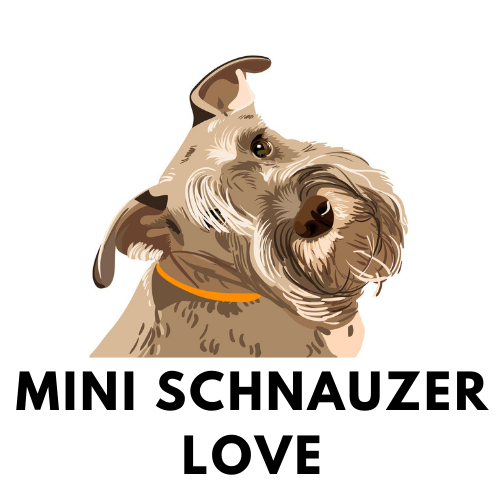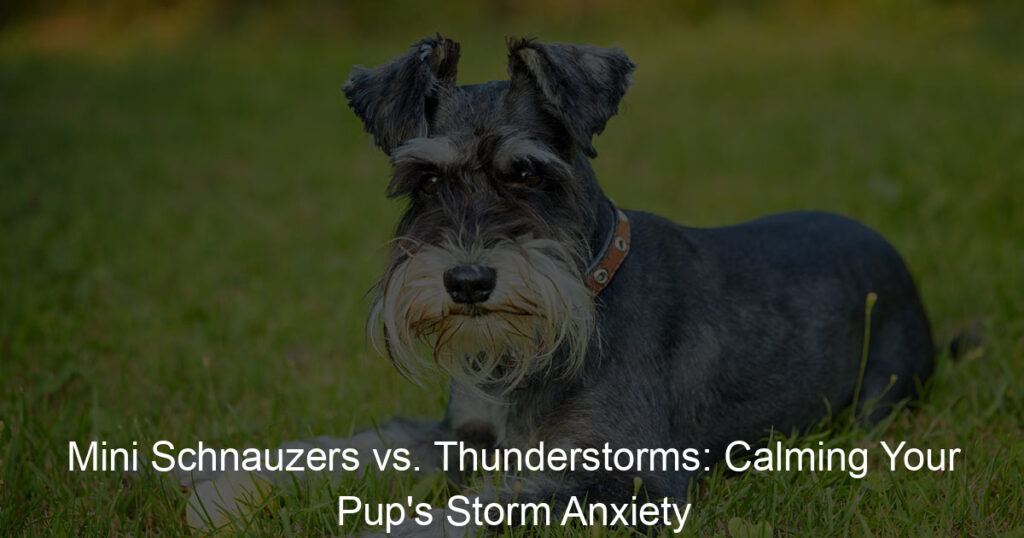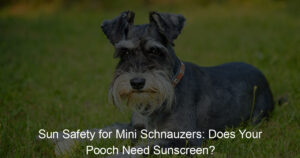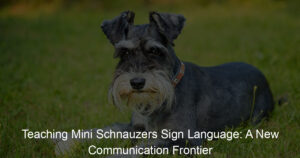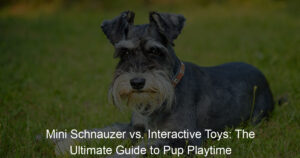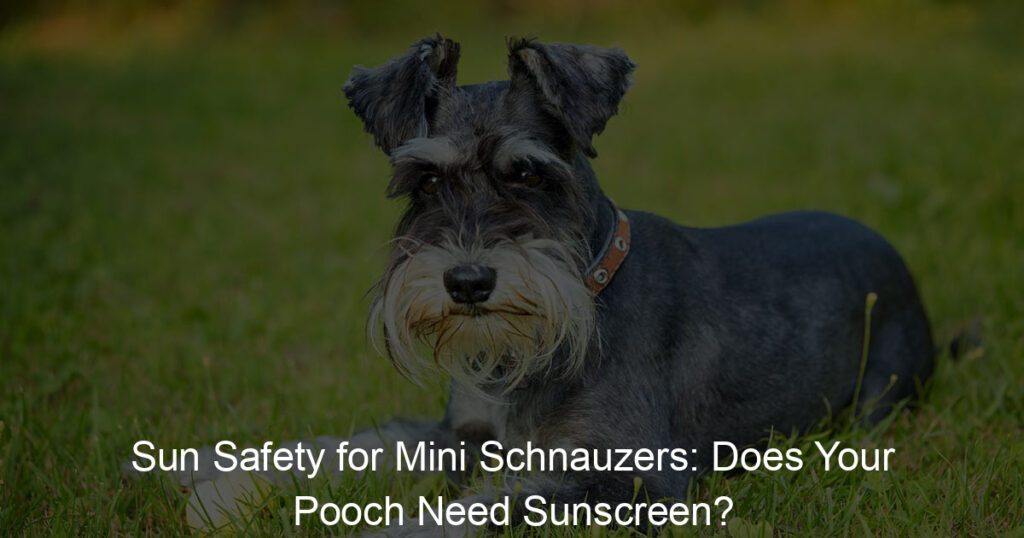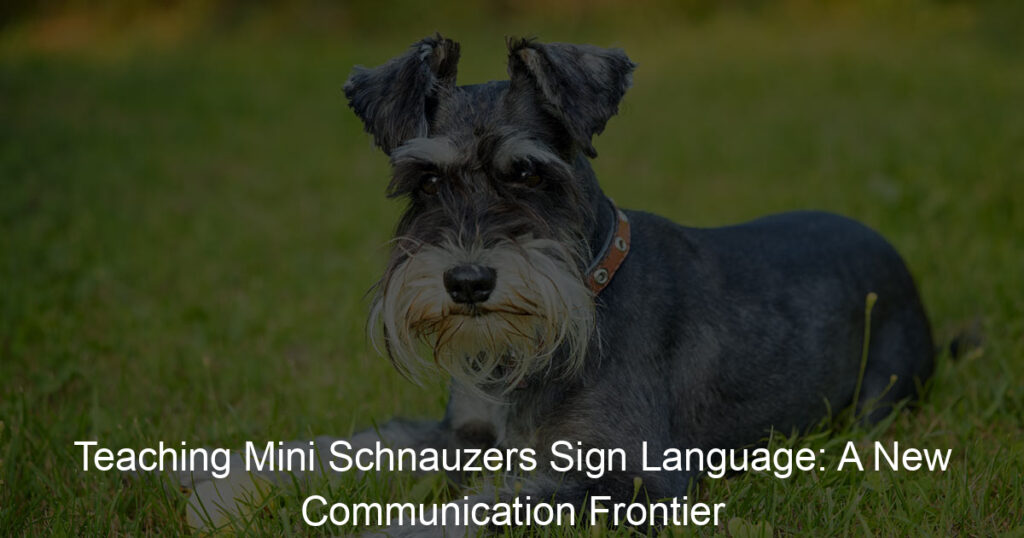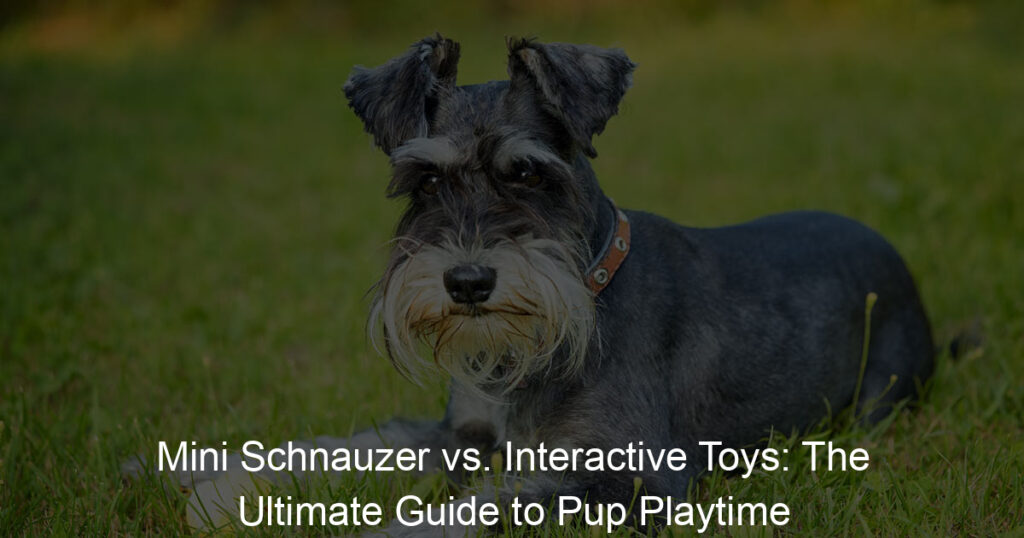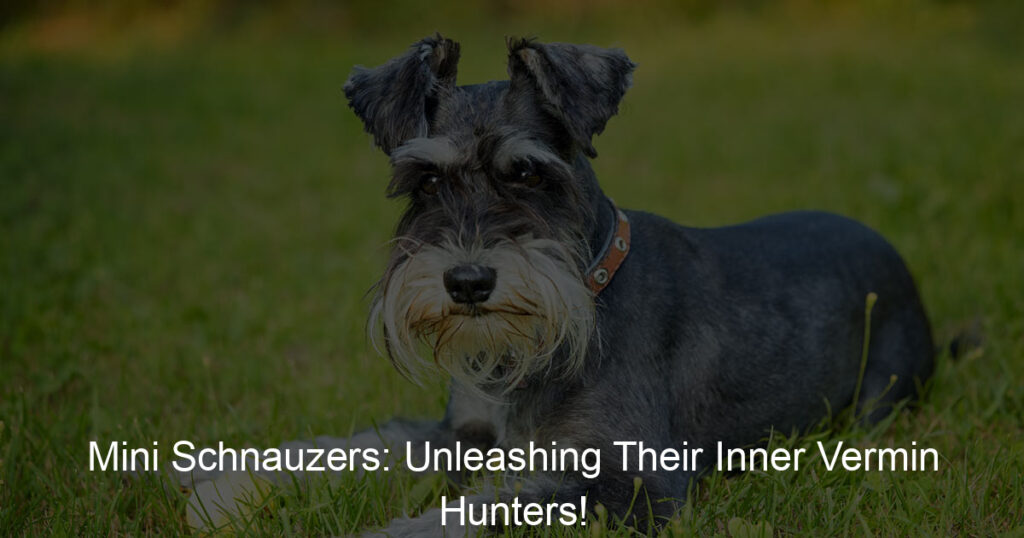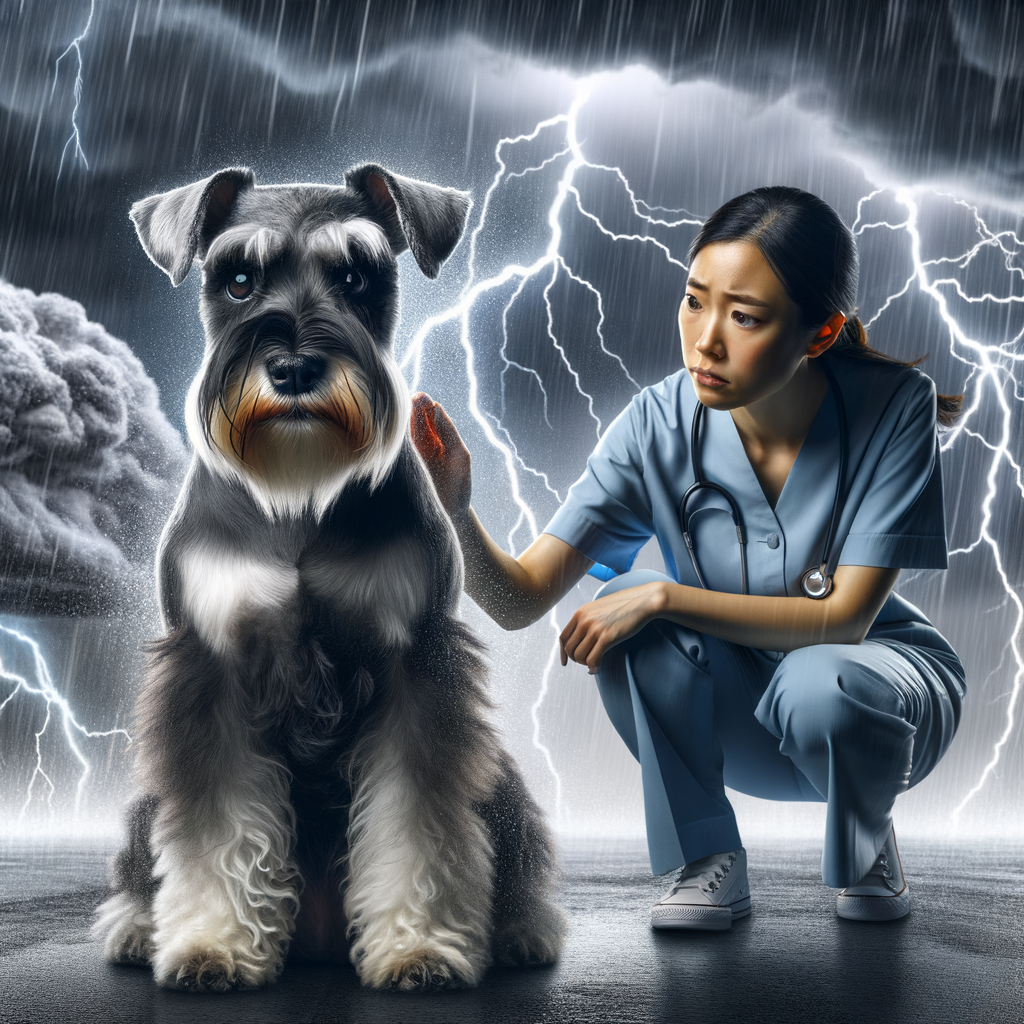
Understanding Mini Schnauzer Anxiety
Mini Schnauzers, like all dogs, can experience anxiety. This feeling of unease can be triggered by various factors, including storms. In this section, we will delve into understanding the signs and causes of Mini Schnauzer storm anxiety.
- Identifying signs of Mini Schnauzer storm anxiety
- Excessive barking or howling
- Pacing or restlessness
- Shaking or trembling
- Hiding or trying to escape
- Excessive drooling or panting
- Understanding the causes of Schnauzer anxiety
- Genetics: Some Mini Schnauzers are genetically predisposed to anxiety. If a parent dog has anxiety, their offspring are more likely to have it too.
- Environment: Changes in the environment, such as moving to a new home, can cause anxiety in Mini Schnauzers.
- Storms: The loud noises, flashes of light, and changes in atmospheric pressure during a storm can be terrifying for a Mini Schnauzer, leading to storm anxiety.
Recognizing the signs of storm anxiety in your Mini Schnauzer is the first step towards helping them. These signs can vary from dog to dog, but common ones include:
If your Mini Schnauzer exhibits any of these behaviors during a storm, they may be experiencing storm anxiety.
Various factors can cause anxiety in Mini Schnauzers. Some of the most common include:
Understanding the cause of your Mini Schnauzer’s anxiety is crucial in finding the right solution to help them.
In the following sections, we will explore various approaches and specific strategies to ease your Mini Schnauzer’s storm anxiety, including a look at medication options and case studies of successful anxiety solutions.
Thunderstorm Anxiety in Dogs: An Overview
Thunderstorms can be a source of fear and anxiety for many dogs. The loud noises, flashes of light, and changes in atmospheric pressure can trigger a fear response that can be distressing for both the dog and the owner. Understanding why thunderstorms trigger anxiety and recognizing the symptoms of thunderstorm phobia can help you better support your furry friend during these challenging times.
- Why thunderstorms trigger anxiety in dogs
- Common symptoms of thunderstorm phobia in dogs
Just like humans, dogs have their own unique fears and anxieties. Thunderstorms are a common trigger due to their unpredictable nature and the sensory overload they can cause. Dogs have a much more acute sense of hearing than humans, so the loud booms of thunder can be particularly distressing. Additionally, dogs are sensitive to changes in atmospheric pressure, which can increase their anxiety levels during a storm.
Thunderstorm phobia can manifest in a variety of ways in dogs. Some common symptoms include excessive barking or whining, pacing, hiding, trembling, and even destructive behavior. It’s important to note that these symptoms can vary greatly from dog to dog. Some dogs may show only mild signs of discomfort, while others may become extremely distressed. Recognizing these symptoms is the first step in helping your dog manage their anxiety.
Understanding your dog’s fear of thunderstorms and recognizing the symptoms of thunderstorm phobia can help you provide the support and comfort your dog needs during these stressful times. Remember, it’s important to stay calm and patient with your dog, as your own emotions can greatly affect their behavior. With the right knowledge and approach, you can help your dog navigate thunderstorm anxiety more effectively.
Easing Dog Anxiety: General Approaches
When it comes to easing dog anxiety, especially in Mini Schnauzers, there are several general approaches that can be effective. These methods are not breed-specific and can be used for any dog experiencing anxiety. They involve training techniques and providing a safe space during storms.
- Training Techniques to Reduce Anxiety
- Importance of a Safe Space During Storms
Training is a powerful tool in managing a dog’s anxiety. It helps to establish a bond of trust and understanding between the dog and its owner. One effective training technique is the use of positive reinforcement. This involves rewarding your dog for calm behavior, especially during situations that would normally cause anxiety. For instance, if your dog remains calm during a loud noise, reward them with a treat or praise. Over time, your dog will associate the previously anxiety-inducing situation with positive experiences, helping to reduce their anxiety.
Storms can be particularly stressful for dogs. The loud noises and changes in atmospheric pressure can trigger their anxiety. One way to help your dog cope with this is by providing a safe space for them during storms. This could be a specific room in your house, a crate if they are crate-trained, or even a blanket fort. The goal is to create a space where your dog feels secure and can retreat to when they are feeling anxious. Make sure this space is easily accessible and filled with comforting items like their favorite toys or blankets.
Remember, every dog is unique and what works for one may not work for another. It’s important to be patient and consistent in your approach to managing your dog’s anxiety. If you’re struggling, don’t hesitate to seek professional help from a vet or a certified dog behaviorist.
Specific Strategies for Mini Schnauzer Storm Anxiety
When it comes to managing storm anxiety in Mini Schnauzers, there are specific strategies that can be quite effective. These strategies fall under two main categories: Behavioral Approaches and Environmental Changes. In this section, we will focus on Behavioral Approaches.
Behavioral Approaches
Behavioral approaches involve training your Mini Schnauzer to react differently to storms. This can be achieved through desensitization techniques and positive reinforcement strategies.
- Desensitization techniques for Schnauzer storm fear
- Positive reinforcement strategies
Desensitization involves gradually exposing your Mini Schnauzer to the sounds of storms in a controlled environment. This can help your dog become less afraid of storms over time. For example, you could start by playing a recording of a storm at a low volume, and then gradually increase the volume over several days or weeks. It’s important to keep these sessions short and positive, and to never force your dog to endure something that is clearly causing them distress.
Positive reinforcement involves rewarding your Mini Schnauzer for calm behavior during storms. This can help your dog associate storms with positive experiences, rather than fear. For example, you could give your dog a treat or a favorite toy whenever a storm starts. Over time, your dog may start to look forward to storms because they know they will get a reward.
Remember, every dog is different, and what works for one Mini Schnauzer may not work for another. It may take some trial and error to find the best approach for your dog. If your Mini Schnauzer’s storm anxiety is severe, it may be helpful to consult with a professional dog trainer or a veterinary behaviorist.
| Behavioral Approach | Description |
|---|---|
| Desensitization | Gradually exposing your dog to the sounds of storms in a controlled environment. |
| Positive Reinforcement | Rewarding your dog for calm behavior during storms. |
Environmental Changes
When it comes to managing your Mini Schnauzer’s storm anxiety, making some environmental changes can make a significant difference. Let’s explore two key strategies: creating a calming environment during storms and using sound-proofing to minimize storm noise.
- Creating a Calming Environment During Storms
- Using Sound-Proofing to Minimize Storm Noise
Creating a calming environment for your Mini Schnauzer during a storm can help reduce their anxiety. This can be achieved by providing a safe space for your pet. This could be a specific room or a crate where your dog feels secure. You can add their favorite toys, blankets, and even an item of your clothing to provide comfort. Dimming the lights and playing soft music can also help create a soothing atmosphere.
Sound-proofing your home or a specific area can significantly reduce the noise from the storm, helping to ease your Mini Schnauzer’s anxiety. This can be done by using sound-proofing materials such as foam panels or sound-proof curtains. Additionally, using white noise machines or fans can also help drown out the noise of the storm.
Remember, every Mini Schnauzer is unique and what works for one might not work for another. It’s important to try different strategies and see what works best for your pet. These environmental changes can make a big difference in helping your Mini Schnauzer feel safe and secure during a storm.
| Environmental Changes | Benefits |
|---|---|
| Creating a calming environment | Provides a safe and secure space for your pet during a storm |
| Using sound-proofing | Reduces the noise from the storm, helping to ease anxiety |
Calming Dogs During Storms: A Look at Medication Options
When thunderstorms roll in, our furry friends can become anxious and frightened. In some cases, their fear can be so severe that it may require medication to help them stay calm. In this section, we will explore when medication may be necessary and the commonly prescribed medications for dog anxiety during thunderstorms.
- When medication may be necessary
While it’s normal for dogs to be a little uneasy during a storm, severe anxiety is a different matter. If your dog exhibits extreme behaviors like destructive chewing, excessive barking or howling, attempting to escape, or showing signs of panic and distress, it might be time to consider medication. Always consult with your veterinarian before starting any new medication for your dog.
- Commonly prescribed medications for dog anxiety during thunderstorms
There are several medications that veterinarians commonly prescribe to help dogs cope with storm anxiety. These include:
| Medication | Description |
|---|---|
| Alprazolam (Xanax) | This is a short-acting anti-anxiety medication that can help to reduce fear and anxiety in dogs during thunderstorms. |
| Diazepam (Valium) | Valium is a longer-acting medication that can help to calm dogs and reduce anxiety. |
| Clomipramine (Clomicalm) | This medication is specifically designed for dogs with separation anxiety, but can also be used for storm-related anxiety. |
Remember, each dog is unique and what works for one might not work for another. It’s important to work closely with your veterinarian to find the right medication and dosage for your dog.
Medication can be a helpful tool in managing your dog’s storm anxiety, but it’s not a cure-all. It’s best used in conjunction with other strategies like behavior modification and environmental changes. Always consult with a professional before making any decisions about your dog’s health.
Schnauzer Anxiety Solutions: Case Studies
Understanding anxiety in Schnauzers and finding effective solutions can be a challenging task. However, through real-life case studies, we can gain insights into the best practices and strategies that have proven successful. Let’s take a look at two such case studies.
- Case study 1: Behavioral Training Success
Meet Max, a Mini Schnauzer who used to panic during thunderstorms. His owners decided to try behavioral training as a solution. They started by creating a safe space for Max during storms, filled with his favorite toys and blankets. They also used positive reinforcement, rewarding Max with treats and praise when he remained calm during a storm.
Over time, Max started associating thunderstorms with positive experiences rather than fear. The behavioral training was a success! Max’s anxiety levels significantly decreased, and he became much calmer during storms.
- Case study 2: Medication and Environmental Changes Combined
Next, we have Bella, another Mini Schnauzer who suffered from severe anxiety. Bella’s owners decided to combine medication with environmental changes to help her cope. They consulted with a vet who prescribed anti-anxiety medication. In addition to this, they made environmental changes at home, such as reducing noise levels and creating a calm atmosphere during storms.
With the combination of medication and environmental changes, Bella’s anxiety levels dropped significantly. She became more relaxed and less fearful during storms. This case study demonstrates how a multi-pronged approach can be highly effective in managing Schnauzer anxiety.
These case studies highlight the importance of understanding your Schnauzer’s unique needs and finding a solution that works best for them. Whether it’s through behavioral training, medication, environmental changes, or a combination of these, there are various ways to manage Schnauzer anxiety effectively.
Key Takeaways: Managing Mini Schnauzer Behavior During Storms
As we conclude, let’s recap the most important points about managing your Mini Schnauzer’s behavior during storms. These key takeaways are essential to helping your furry friend cope with their anxiety.
- Understanding your dog’s fear is the first step:
Recognizing that your Mini Schnauzer’s behavior changes during storms due to fear is crucial. This fear is often caused by the loud noises and changes in atmospheric pressure. By understanding this, you can better empathize with your pet and take the necessary steps to help them feel safe.
- Training and environmental changes can significantly reduce anxiety:
Training your Mini Schnauzer to associate storms with positive experiences can greatly reduce their anxiety. This could involve playing their favorite game or giving them a special treat during a storm. Additionally, creating a safe space in your home where your dog can retreat to during a storm can also help them feel more secure.
- Medication should be a last resort, used under vet supervision:
While medication can help manage severe anxiety in dogs, it should only be used as a last resort and always under the supervision of a vet. It’s important to exhaust all other options first, such as training and environmental changes, before resorting to medication.
In conclusion, managing your Mini Schnauzer’s behavior during storms involves understanding their fear, implementing training and environmental changes, and considering medication as a last resort. By following these steps, you can help your pet feel more comfortable and secure during stormy weather.
